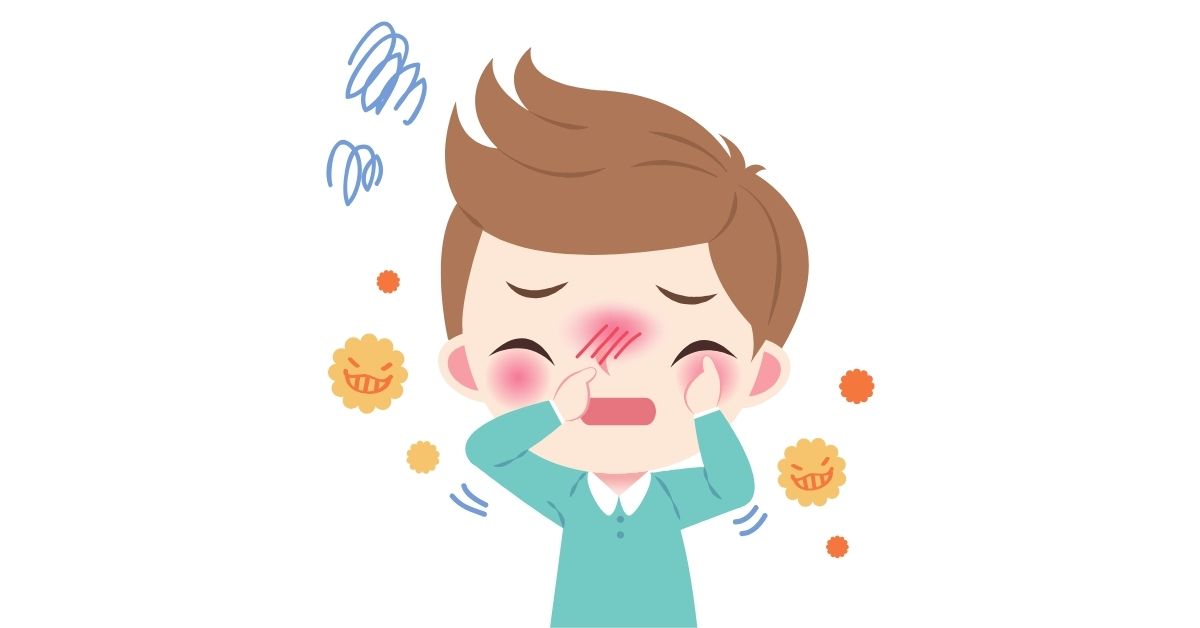What is Hay Fever?
Hay allergies refer to seasonal allergies, known as seasonal allergic rhinitis. It refers to allergic reactions and symptoms which develop or exacerbate during a particular season in the year when specific allergens are more common. Pollen is the most common allergen for hay fever. Thus, symptoms of hay fever appear most commonly in the spring and the summer months when trees and plants release their pollen. Hay fever can develop at any age in a child but usually occurs after 2 years of age and develops before 20 years.
What are the signs and symptoms of Hay Fever?
Hay fever has signs and symptoms like a common cold but these appear at a specific time or month every year.
- Child sneezes continuously
- Child has watery runny nose
- Child has itchy nose or throat
- Child may have nasal congestion
Along with these symptoms, children may also have signs of other allergic conditions as well. Children may develop allergic pink eyes along with hay fever. If the child starts wheezing or having trouble breathing in hay fever, they may have allergic asthma flare ups.
What causes hay fever?
Hay fever is caused by an allergic reaction to specific external agents. The most common agent is pollen but may include others as grass, dust, mites, dander, animal fur. When an allergen enters the body, the immune response of the body identifies it as an external agent and starts the process to fight it. A hyperactive immune system releases various chemicals such as histamine into the bloodstream which are responsible for the signs and symptoms in the allergy.
Specific diagnostic tests for hay fever
Specific tests may be performed to check for allergic reactions if your doctor suspects the child has hay fever. The doctor may suspect an allergic reaction based on the type of symptoms and the time. If your child exhibits the same symptoms at the same time every year or an exposure to a certain thing or a certain activity, your doctor might suspect an allergic reaction and recommend specific testing.
- Skin prick testing or Allergy skin testing is a specific test to understand what allergen is causing the reaction. There are a number of different allergens which are available in preparation for the allergic reaction testing. These are injected into the skin of the forearm or back by a small prick. Each site is marked with the allergen name and time of injection. Sensitivity is checked on the skin after 15 min for immediate allergic reaction and after 36-48 hours for delayed reaction. A person who is sensitive will have redness, swelling and flare up of the skin.
- Blood tests may be recommended when the child has hay fever. These measure eosinophils, a type of white blood cell responsible for allergic reactions and IgE, a type of antibody responsible for allergic reactions.
The diagnosis of hay fever is made by the doctor based on all the above factors including the symptoms and history along with the blood tests and skin prick test.
Treatment of hay fever
Treatment of hay fever depends on the severity and the frequency of the symptoms along with how bothersome they are for the child.
- Limiting the exposure to the allergen is the first step of the treatment.
- Closing windows in the pollen season, using air conditioning instead of fresh air and staying indoors during pollen season can limit the severity of symptoms.
- Anti Allergic medications may need to be used if limiting exposure does not control the symptoms. Anti Allergic can be given orally, as an eye drop or a nasal spray depending on the symptoms.
- If medications do not provide sufficient relief, immunotherapy may be tried.









